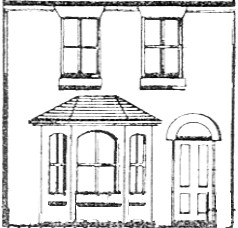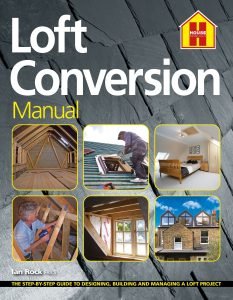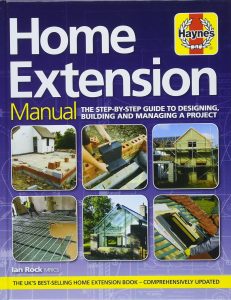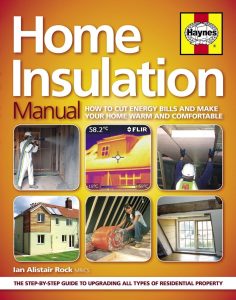Care & Repair
Planning & Buildings Regs

Planning permission is normally required to extend, convert or alter the appearance of buildings, or to change their use.
The quality of the building work is a totally separate issue that’s down to Building Control. However both Planning and Building Control are administered by your local Council.
Owners of Victorian & Edwardian properties are more likely to encounter planning issues than owners of modern houses as there’s more chance of being Listed or in a conservation area. Planners usually like to encourage you to retain and match original features, which although more expensive usually adds to the value.
Building RegulationsBy law, a Building Regulations application must be made before any structural alterations are carried out – such as extending, converting, taking down internal or external walls, removing chimney breasts. Without a valid completion certificate from Local Authority Building Control your property will be blighted when you come to sell or re-mortgage in future, and could be dangerously unsafe in the meantime. Detailed information can be found on our sister website Rightsurvey.co.uk
|
Do I need planning permission ?
There are many kinds of alterations and additions to houses for which you DO NOT NEED to apply for planning permission. Unless the building is listed, consent is not normally required for changes to the inside of buildings, or for small alterations to the outside such as the installation of telephone connections and alarm boxes.
Other small changes, for example putting up walls and fences below a certain height, have an automatic general planning permission for which a specific application is not required.
However, it is usually best to first discuss your proposals with the planning department of your council since it is your responsibility for seeking planning permission. If required, permission should be granted before any work begins. If you have any doubts or queries about a particular case, the first thing to do is ask the planning department of your local council.
Enforcement
Be warned – Councils have draconian enforcement powers. If you go ahead with your development without the required permission, the local council (the planning authority) may ask you to make a retrospective planning application.
If it decides that permission should not be granted it may require you to put things back as they were entirely at your expense. You can appeal but if the verdict comes out against you and you still refuse to comply you may be prosecuted. Nasty!
Extending and altering
Many kinds of buildings can be built in your garden or on the land around your house without the need to apply for planning permission. These can include sheds, garages, greenhouses, accommodation for pets and domestic animals, summer houses, swimming pools, ponds, sauna cabins, enclosures (including tennis courts) and many other kinds of structure.
But in some circumstances you will need to apply for planning permission.
Buildings and structures
You DO need to apply for planning permission if you want to do any of the following on the land around your house:-
* to put up a building or structure which would be nearer to any highway than the nearest part of the “original house” (# see notes below) , unless there would be at least 20 metres between the new building and any highway. The term “highway” includes public roads, footpaths, bridleways and byways.
* more than half the area of land around the “original house” would be covered by additions or other buildings.
* the building or structure is not to be used for domestic purposes ( e.g. for parking a commercial vehicle, running a business or for storing goods in connection with a business).
* if your house is a listed building, a Conservation Area, a National Park, an Area of Outstanding Natural Beauty, or the Broads, and you want to put up a building or structure with a volume of more than 10 cubic metres.
# The term “original house” means the house as it was first built or as it stood on 1 July 1948 (if it was built before that date). Although you may not have built an extension to the house, a previous owner may have done so.
Permitted Development Rights (PDRs) for Extending Your House
You DO NOT need to apply for planning permission before building an extension to your house where it’s smaller than the Permitted Development size rules:-
Permitted Development Rights for front, rear and side extensions can be seen on our sister website Rightsurvey.co.uk
For rules on LOFT CONVERSIONS click here
Work on the roof
You DO NOT normally NEED to apply for planning permission to re-roof your house or to insert roof lights or skylights. However, there are some special rules which govern extensions to the roof:-
* you DO need to apply for planning permission if you live in a Conservation Area, a National Park, an Area of Outstanding Natural Beauty or the Broads and you want to build an extension to the roof of your house or any kind of addition which would materially alter the shape of the roof.
* outside those areas, you need to apply for planning permission if any of the following following is true.
* the work would make some part of the house higher that the highest part of the existing roof.
The dormer or other addition you want to build would extend beyond the plane of any existing roof slope facing a highway.
* a roof extension would add more than 40 cubic metres to the volume of a terraced house or more than 50 cubic metres to any other kind of house.
Maintenance
You DO NOT NEED to apply for planning permission (unless the building is listed):
* for repairs or maintenance
* for minor improvements, such as painting your house or replacing windows
* for internal alterations
* for the insertion of windows, skylights or roof lights (but, if you want to create a new bay window, it will be treated as an extension of the house);
* for the installation of solar panels which, in the council’s view, do not project significantly beyond the roof slope; and
* to re-roof your house (but additions to the roof are treated as extensions to the house).
Occasionally, you may need to apply for planning permission for some of these works because your council has made an Article 4 Direction withdrawing permitted development rights.
If you live in a listed building, you will need listed building consent for any significant works whether internal or external . You also may need planning permission to alter, repair or maintain a gate, fence, wall or other means of enclosure.
If you live in a Conservation Area, a National Park, an Area of Outstanding Natural Beauty or the Broads, you will need to apply for planning permission before cladding the outside of your house with stone, tiles, artificial stone, plastic or timber.
Change of use
Consent is required for conversion of a single house into two or more dwellings (eg flats). But in many cases, a change of use of a building or land does not require planning permission. For example, a greengrocer’s can be changed to a shoe shop without permission. Planning permission is not required when both the present and proposed uses fall within the same “class” as defined in the Town and Country Planning (Use Classes) Order 1987. It is also possible to change use between some classes without making an application.
Demolition
If you decide to demolish a building, even one which has suffered fire or storm damage, it does not automatically follow that you will get planning permission to build a replacement.
Where demolition of any kind of residential property is proposed, the council may wish to agree the details of how you intend to carry out the demolition and how you propose to restore the site afterwards. You will need to apply for a formal decision on whether the council wishes to approve these details before you start demolition. This is what is called a “prior approval application” and your council will be able to explain what it involves. Listed buildings and those in conservation areas are likely to require consent.
Fences, walls and gates
You DO need to apply for planning permission if you wish to erect or add to a fence, wall or gate and:
* it would be over 1 metre high and next to a highway used by vehicles (or the footpath of such a highway); or over 2 metres high elsewhere; or
* your right to put up or alter fences, walls and gates has been removed by an ‘article 4 direction’ (ask the planners) or a planning condition; or
* your house is a listed building or in the curtilage of a listed building.
You DO NOT NEED to apply for planning permission to take down a fence, wall,or gate, or to alter or improve an existing fence, wall or gate (no matter how high) if you don’t increase its height.
In a conservation area, however, you might need conservation area consent to take down a fence, wall or gate.
You DO NOT NEED planning permission for hedges as such, though if a planning condition or a covenant restricts planting (for example, on “open plan” estates, or where a driver’s sight line could be blocked) you may need planning permission and/or other consent.
Patios and driveways
There are no restrictions on the area of land around your house which you can cover with hard surfaces at, or near, ground level.
However, significant works of embanking or terracing to support a hard surface might need a planning application. Alternatively, an elevated patio or decking, especially if it creates useable space underneath, might be regarded as an extension or garden building, and subject to the appropriate limits. You will also need to apply for planning permission if the hard surface is not to be used for domestic purposes and is to be used instead, for example, for parking a commercial vehicle or for storing goods in connection with a business. Ask the council if in doubt.
You must obtain the separate approval of the highways department of your council if a new driveway would cross a pavement or verge. You will also need to apply for planning permission if you want to make a new or wider access for your driveway on to a trunk or other classified road. The highways department of your council can tell you if the road falls into this category.
Porches
You DO NOT NEED to apply for planning permission unless the proposed porch:-
* has a ground area of more than 3 square metres (measured externally)
* is higher than 3 metres above ground level, or
* is less than 2 metres away from the boundary of a dwelling house with a highway (ie public roads, footpaths, bridleways and byways).
Satellite / TV / Radio aerials
Normal domestic TV and radio aerials do not need planning permission.
In certain circumstances, you will need to apply for planning permission to install a satellite dish on your house.
If your house is a listed building, you may need listed building consent to install a satellite dish on your house.
Remember, you are responsible for the appropriate siting of satellite dishes; if you have any doubt, contact the planning department of your local council or seek independent professional advice.
Sheds and greenhouses
You DO need to apply for planning permission if any of the following cases apply on the land around your house:-
* to put up a building or structure which would be nearer to any highway than the nearest part of the “original house”, unless there would be at least 20 metres between the new building and any highway. The term “highway” includes public roads, footpaths, bridleways and byways.
* more than half the area of land around the “original house” would be covered by additions or other buildings.
* the building or structure is not to be used for domestic purposes and is to be used instead, for example, for parking a commercial vehicle, running a business or for storing goods in connection with a business.
* to put up a building or structure which is more than 3 metres high, or more than 4 metres high if it has a ridged roof. (Measure from the highest ground next to it.)
* if your house is a listed building, and you want to put up a building or structure with a volume of more than 10 cubic metres.
* if you live in a Conservation Area, a National Park, an Area of Outstanding Natural Beauty, or the Broads, and you want to put up a building or structure with a volume of more than 10 cubic metres (though it might be allowable as an extension)
The words “original house” have a particular meaning.
Note: in all cases, if your new building would have a volume over 10 cubic metres, and come within 5 metres of the house, it would be treated as an extension. Also, if your new extension would bring some existing garden building within 5 metres of the (extended) house, that existing building’s volume could be deducted from your overall volume entitlement for the house, as if it were another extension.
Flats & maisonettes
You DO need to apply for planning permission (and the Freeholder’s consent) to build an extension, an outbuilding such as a garage, shed or greenhouse, as well as for any other work which would materially alter the appearance of the building. You will also need to apply for planning permission to create a hard surface such as a patio.
You will not need to apply for planning permission to paint your flat or maisonette but, if you are a leaseholder, you may first need to get permission from your landlord or management company. However, you may be required to apply for conservation area consent or listed building consent and you should contact your local planning authority to determine this.
Satellite dishes: In certain circumstances, you will need to apply for planning permission to install a satellite dish on your flat or maisonette. This is explained elsewhere in this guide. Remember, if you are a leaseholder, you may need to obtain permission from the landlord.
If in doubt ask your council !
















